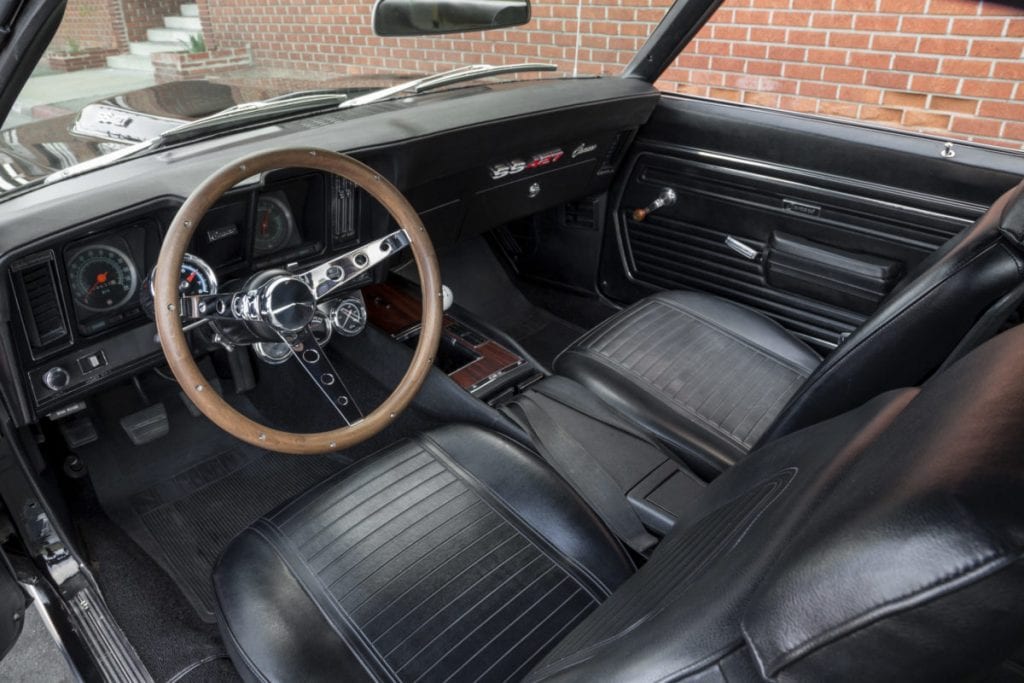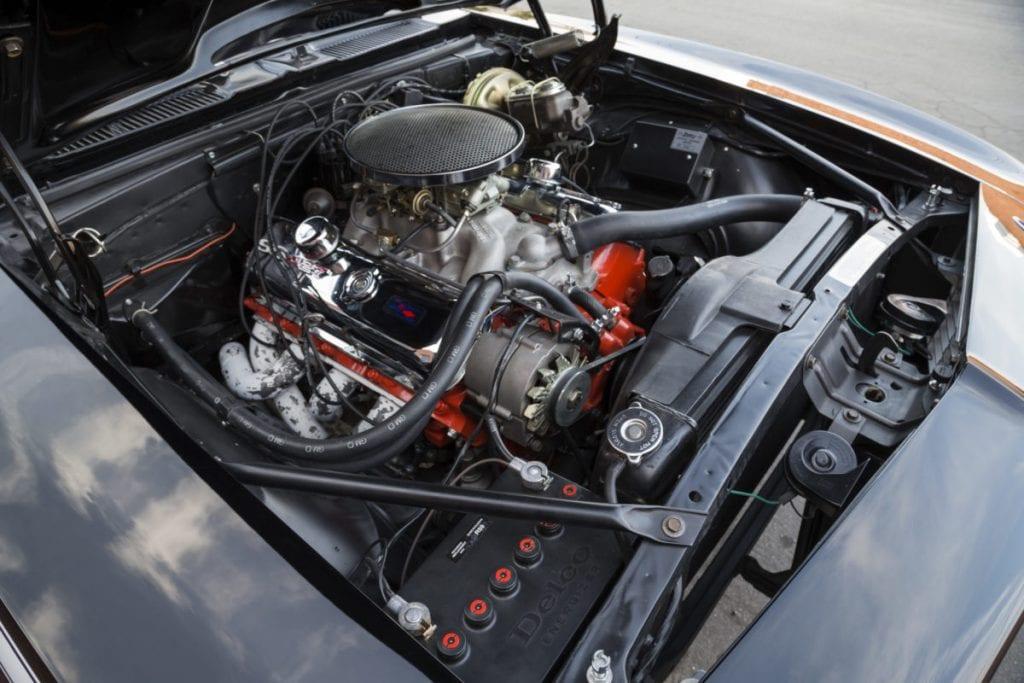What It’s Like to Own a 1969 Chevy Camaro SS

Contents
In this installment of “What It’s Like to Own,” we sit down with veteran automotive journalist Scott Oldham to talk about the highs and lows of owning a classic 1969 Chevrolet Camaro SS427 Baldwin-Motion replica.
The Interview
How did you get interested in the 1969 Camaro SS?
My Camaro is a replica or clone of a very special Camaro my father bought new in 1969 only to have it stolen from him about six months later. It was never recovered. One day my father had what he called “the coolest car he ever owned,” and the next day he didn’t. It basically vanished into thin air.
Based in Baldwin, New York, on Long Island, Baldwin-Motion was a partnership between the Baldwin Chevrolet dealership and Motion Performance, a local and very well-respected speed emporium. You would order your Chevy from Baldwin, and then Motion would make it as mean and fast as you wanted, or could afford, usually swapping the 396 cubic inch engine for a more powerful 427. The possibilities were endless, and Baldwin-Motion cars are very collectible today, selling for hundreds of thousands of dollars.
When he was 26 years old, my father ordered an all-black 1969 SS396 Camaro in August of 1968 and took delivery of his Motion-prepared SS427 Camaro in early December. It was the first of just a handful of Camaros built by Motion that year and appeared in the company’s magazine ads and on the cover of its catalog. Being an auto writer, my father extensively photographed his new car and wrote about it often. Forty-five years later, we used those photos and a mix of original and reproduction parts to replicate the car down to the smallest detail, and we’ve been enjoying it ever since.

How long have you owned the car, and how did you acquire it?
We’ve owned the car about seven years. To finance the project, we sold a 1969 Rally Sport Camaro convertible we’d owned since 1980. That wasn’t easy; it was like a member of the family. To give us a head start, we found an all-black SS396 Camaro clone in Arizona. It was just like my father’s original car would have been when it arrived at Baldwin Chevrolet. We then spent about a year doing the work Motion did in the winter of 1968, swapping in a 427 engine, raising the suspension, fitting larger wheels and tires, SS427 badges, and a fiberglass hood with the stinger scoop from a 1967 big-block Corvette. Joel Rosen, the owner of Motion Performance, even helped with some details, along with my father’s best friend Marty Schorr, who was also involved with Motion back in the day.
We completed the car just in time for the Muscle Car and Corvette Nationals in Chicago in November of 2015. It’s the most prestigious muscle car show in the country — and, as luck would have it, that year it was featuring a group of original Baldwin-Motion cars. MCACN doesn’t usually allow replicas and clones, but since it was my father cloning his own car, and with the blessing of Rosen and Schorr, the organizers made an exception. We debuted the car at the show, and it was a huge hit. Many of the attendees remembered the original car and knew the story of it being stolen. They were excited to see it brought back to life.
How do you typically use the Camaro?
Since the car is clone, we drive it everywhere. If it still existed, my father’s original Baldwin-Motion Camaro would be worth something like $500,000. It would be too rare and valuable to drive. If we still had it, we would be afraid to use it. It would probably just sit in the garage and get trailered to concours around the country. But not this car. We drive it. And we drive it hard. It does great burnouts. I enjoy it on most weekends, usually taking it to a Cars and Coffee event or maybe just a cruise up the coast collecting thumbs up from other motorists along the way. It is crazy loud, so I try not to fire it up too early in the morning. My neighbors don’t complain, but I try to respect their sleep.
What do you enjoy most about it?
For the first few years, my father and I enjoyed the car together. The build brought us closer together, and we never missed an opportunity to take it out on a sunny day and run it though the gears. Since my father’s passing a couple of years ago, it’s usually one of my teenage daughters in the passenger seat, but my father is always in that car with me. It might have my name on the registration, but it will always be his car.
What don’t you like?
It rides horribly. Back in the day, guys would raise their muscle cars, installing taller suspensions like the professional drag racers of the time, heroes like Bill Jenkins, Dick Landy, and Ronnie Sox. It looks tough, but the ride is terrible. It crashes over bumps and follows every little grove in the road. It doesn’t help that we also recreated Motion’s traction bars, which clamp the rear springs, and installed bias ply tires for ultimate authenticity.

What’s something most people probably wouldn’t know about this Camaro?
What’s unique about Baldwin-Motion Camaros is that each one was custom ordered by the buyer, so no two are exactly alike. The most famous of the Chevy dealer specials from the time are Yenko Camaros, which are also 427 powered. Don Yenko sold many more Camaros than Baldwin-Motion, though his were essentially templated aside from their color and maybe a few other small details, like wheels. Every Yenko Camaro got the same badging, striping, hood and stance. But each and every Baldwin-Motion Camaro or Corvette, Chevelle, Nova, or Impala was a one of a kind.
How demanding is maintenance and upkeep? Any big surprises?
At first I thought I could tune the engine myself. I was wrong. Every new build that includes a fresh-from-the-box combination of parts — including a new engine, carburetor, and ignition system — needs to be dialed in. It was clear pretty quickly I wasn’t getting the job done. But once I had a professional jet the carburetor and set the ignition timing to perfection, it has run beautifully.
I have had two issues, which I was able to fix myself. During big burnouts, it was too easy to over rev the engine, so I installed an electronic distributor with a rev limiter set at 6500 rpm. It looks just like the old points distributor but keeps me from blowing up the big-block when I’m toasting the tires.
I was also chasing a hot start problem for about a year. I tried replacing the coil and putting a heat shield over the starter, but with no luck. Turning to the fuel side, I isolated the carburetor from the heat of the intake manifold and wrapped the fuel lines. Nope. Turns out it was the coil, but my replacement coil was bad as well. At my wits end and on a whim, I installed a third coil and the problem was solved and hasn’t returned. Since then I’ve just changed the oil.

What should a potential Camaro buyer know before pulling the trigger?
Big cubic inch, big horsepower muscle cars from the 1960s don’t run very well on today’s low octane gasoline, especially in California where 91 octane is top shelf. In anticipation of this, the 427 in our Camaro does not have an 11.25:1 compression ratio, like it would have in 1969. We lowered it to 10.1:1 so it will run on modern day pump gas, and we could drive and enjoy the car without the hassle of constantly needing race gas. It only gets about 10 miles to the gallon, so filling up is a common occurrence. With the lower compression ratio, it does run well enough on 91, but it’s still far happier when I mix in a little 101 octane race fuel.
What are your future plans for the car? What would it take for you to consider selling it?
My future plans for the car are more burnouts. I enjoy driving it on the weekends, and I hate the fact that it hasn’t yet seen the drag strip, so a few passes down the local quarter mile are probably in order. I have considered changing the suspension back to stock to improve its ride quality, but I’m hesitant to change the stance, which is such an important part of the car’s appearance.
Selling it is not something I want to do, but as I mentioned I have two teenage daughters, so college tuition times two is just around the corner. I see a lot of Yenko clones sell for between $50,000 and $60,000 at auctions on TV, so I figure that’s a fair price for it. You really couldn’t duplicate it for less.
What’s something that you’ll always remember about the Camaro?
I’ll never forget showing it to my father for the first time. After a year, the build was finally complete, but my father hadn’t seen the finished product. I asked him to come over to my house and stand in the driveway with his granddaughters. The look on his face as I pulled around the corner revving the big-block was priceless. And then he cried, saying, “I’m 26 years old again.”

About the Car
- 1969 Chevy Camaro SS427 Baldwin-Motion (replica)
- purchased in 2015 with 90,000 miles
- driven 5000 miles since purchase
- purchase price: $60,000 (incl. build costs)
- current value: $60,000 (est.)
About the Owner
Based in Los Angeles, Scott Oldham is a second-generation automotive journalist. He caught the car bug from his father Joe Oldham, a well-known auto writer and car nut, and although his wife wishes he would sell a few, his growing collection of classics includes a black and gold 1976 Pontiac Trans Am, a flamed 1955 Chevy hot rod, and this 1969 Chevy Camaro.
Scott’s lifelong passion for cars runs the gamut from American muscle cars to trucks and European sport cars. Once the editor-in-chief of Sport Compact Car magazine, he has also written for Car and Driver, Popular Mechanics, Hagerty Drivers Club, Hemmings, Edmunds, Kelly Blue Book, and Popular Hot Rodding.
Photos courtesy of Scott Oldham